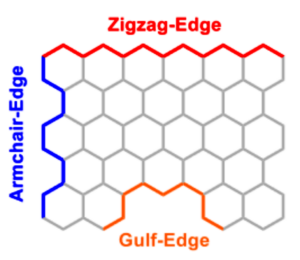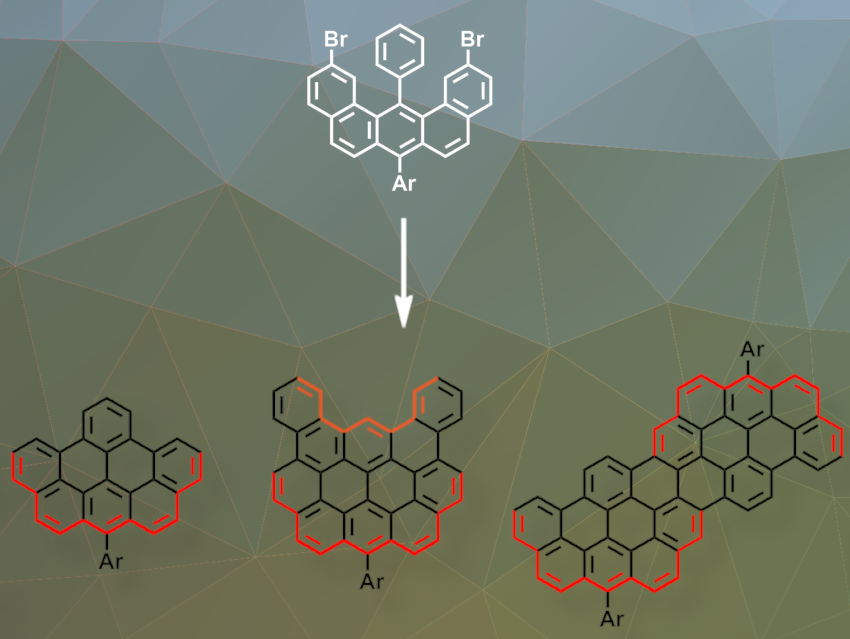Polycyclic aromatic hydrocarbons (PAHs) display edge-dependent electronic properties with versatile applications in sensing, (opto-)electronics, and spintronics. Different edge types are possible such as zigzag, armchair, or gulf peripheries. Among these, zigzag edges are of special value because they hold promise for magnetic ground  states. However, the versatile syntheses of zigzag-edged PAHs and studies of their structure-property relationship are still challenging.
states. However, the versatile syntheses of zigzag-edged PAHs and studies of their structure-property relationship are still challenging.
Klaus Müllen, Max Planck Institute for Polymer Research, Mainz, Germany, and colleagues, have realized the modular construction of zigzag edges in PAHs. The team synthesized three unprecedented zigzag-edged PAHs (Z1-Z3) from asingle, rationally designed “U-shaped” precursor, 2,12-dibromo-7,14-diphenyl-benzo[m]tetraphene (pictured above). To enhance the solubility of the final PAH products, the researchers introduced a long and branched alkyl chain onto the skeleton. Debromination or coupling reaction of the precursor, followed by oxidative cyclodehydrogenation, resulted in the series of unprecedented PAHs.
The most notable feature of the synthesized PAHs is their edge- and size-dependent electronic properties. The optical energy gaps of the PAHs moderately decrease from 3.19 eV to 2.29 eV upon π-extension. The researchers gained a deeper understanding of the structure-property relationships, as reflected by the modulation of PAHs’ vibrational, optoelectronic, and photophysical properties.
The researchers noted that this modular synthesis is not limited to PAHs but can also provide access to related graphene nanoribbons with partial zigzag edges.
- Zigzag‐Edged Polycyclic Aromatic Hydrocarbons from Benzo[m]tetraphene Precursors,
Bo Yang, Yanwei Gu, Giuseppe M. Paternò, Joan Teyssandier, Ali Maghsoumi, Alex J. Barker, Kunal S. Mali, Francesco Scotognella, Steven De Feyter, Matteo Tommasini, Xinliang Feng, Akimitsu Narita, Klaus Müllen,
Chemistry – A European Journal 2023.
https://doi.org/10.1002/chem.202203981



![A Path to Substituted Bicyclo[2.1.1]hexanones](https://www.chemistryviews.org/wp-content/uploads/2024/10/1substitutedbicyclo211hexan2ones_2024-125x94.png)
